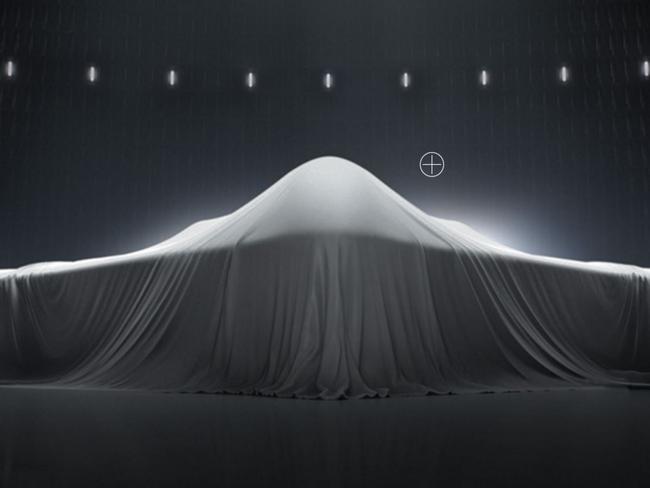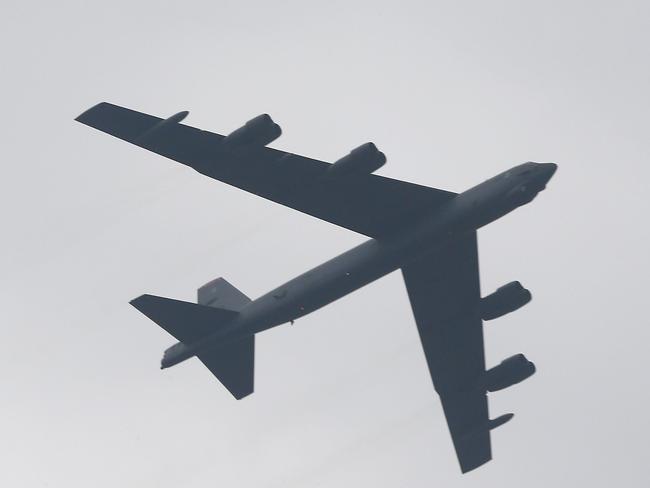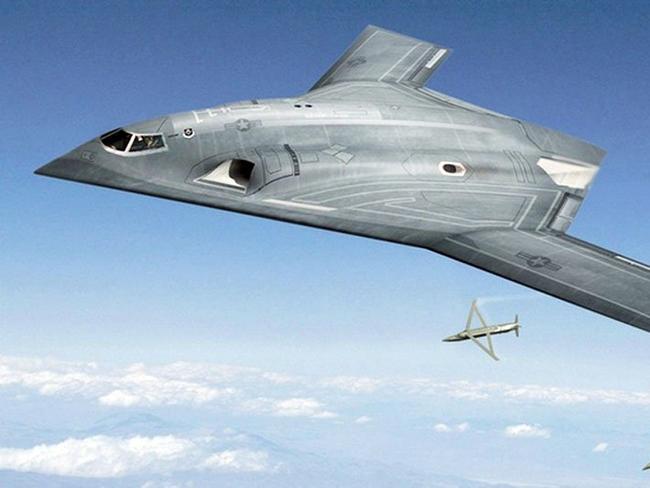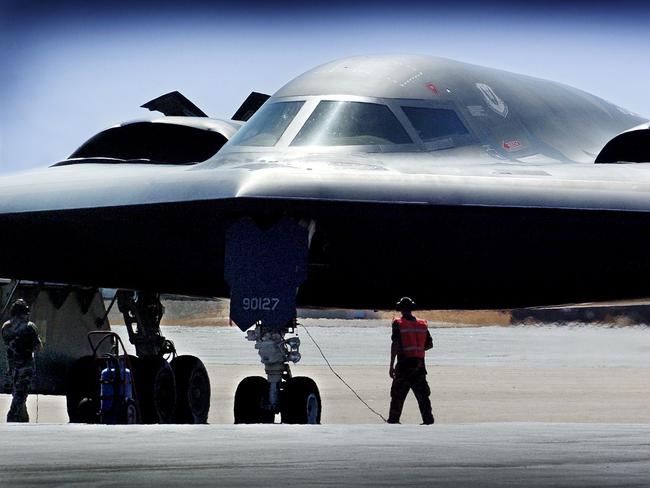US to spend $55 billion on 100 new ultra-advanced stealth bombers
THE ominous, black bat-winged stealth bomber has just been made obsolete. A $55 billion replacement has been announced — and it could be flown by an artificial intelligence.
The US Air Force has chosen a winning bidder for the contract to build its next-generation bomber, a highly classified, $55 billion project designed to replace the B-52 bomber with a stealth aircraft that eventually may be capable of flying without a pilot aboard.
The Air Force said the winner of the high-stakes contest for the bomber contract would be revealed after financial markets closes in the US this morning.
Northrop Grumman beat out Boeing and Lockheed Martin to win the a multibillion-dollar contract to build the next-generation long-range bomber.
EARLIER: Is this the next generation US stealth bomber?
The Air Force has said it will buy up to 100 of the new bombers for $550 million each. Industry news reports say that while the new plane’s specific capabilities are highly secret, it likely will be equipped with hi-tech communications gear and other electronics that would allow it to perform a variety of missions, not just dropping bombs.

The announcement marks an important step in the Pentagon’s broader plan to modernise the entire nuclear force — missile-toting submarines, land-based intercontinental ballistic missiles and long-range bombers. The Congressional Budget Office estimates the cost at $348 billion over 10 years, and others have said it could approach $1 trillion over 30 years.
EXPLORE MORE: Has the future of aircraft carriers been sunk by drones?
The Navy is committed to building a new fleet of 12 nuclear ballistic missile submarines to replace its 14 Trident submarines, and the Air Force is preparing to launch a program to build a modernised fleet of land-based ICBMs to replace its Minuteman 3 force. It’s unclear, however, how the Navy and Air Force will manage this in an era of shrinking budgets.

FLYING DINOSAURS
The new bomber is a high Air Force priority because the oldest ones in its fleet — 1960s-era B-52s — have far outlived their expected service life and even the newest — the B-2 stealth bombers — having been flying for more than two decades. A third bomber, the B-1, is used heavily for conventional strikes but no longer is certified for nuclear missions.
Air Force awards LRS-B contract. Read more here: https://t.co/XmNXYbFFm6 pic.twitter.com/RNQoBqYFxy
— Deborah Lee James (@SecAF23) October 27, 2015For the defence companies who sought the contract, the stakes were high. Boeing has built most of the Air Force’s bombers, including the B-52. And it collaborated with Lockheed Martin on the F-22 stealth fighter.
Northrop Grumman built the B-2 bomber fleet, which was originally planned to include 132 planes but was scaled back to 21 at the end of the Cold War.
Keeping the B2 stealth bomber in the air is proving increasingly difficult. Most of the manufacturers of its custom-made components have long since folded.

INTENSE LOBBYING
Loren Thompson, a vocal advocate of the new bomber program, says it is a key part of modernising the military at a time of increased U.S. focus on China’s growing might.
“The simple truth is that if the United States does not revitalise its dwindling fleet of heavy bombers, it probably cannot prevail in a war against China,” Thompson wrote earlier this month, citing what he called China’s increasingly dense and agile air defences. He heads the Lexington institute, which receives funding from major defence contractors.
Statement from #Boeing, @lockheedmartin, about @usairforce bomber decision https://t.co/tOZEOLfFB8 #lrsb
— Boeing Defense (@BoeingDefense) October 27, 2015A joint statement issued by contract losers Boeing and Lockheed Martin indicates the coalition may challenge the US Air Force decision.
“The Boeing and Lockheed Martin team is disappointed by today’s announcement. We will have further discussions with our customer before determining our next steps,” the statement reads.
“We are interested in knowing how the competition was scored in terms of price and risk, as we believe that the combination of Boeing and Lockheed Martin offers unparalleled experience, capability and resources for this critically important recapitalisation program.”

POWER STRUGGLE
The Obama administration has justified its support for a new long-range bomber by calling it vital to retaining US military predominance. In January, shortly before he left office, then-Defense Secretary Chuck Hagel visited a bomber base in Missouri to underscore his argument that a new bomber would help deter war and preserve the US military’s global reach.
Critics, however, question whether all three “legs” of the US nuclear triad — bombers, subs and land-based missiles — are necessary in the long run. Each of the three has operated well beyond its intended life span, presenting an enormous challenge for the Pentagon at a time when it says budget pressures require it to scale back conventional forces.
During the first 8 weeks of the Kosovo War, B-2s flew just 3% of combat sorties, but destroyed 33% of all targets. pic.twitter.com/eeEvX73UCb
— Northrop Grumman (@northropgrumman) October 25, 2015During WWII, Northrop invented a rudder for flying wings. Today this design helps B-2 maneuver yet stay stealthy. pic.twitter.com/JgzNmlO4WL
— Northrop Grumman (@northropgrumman) October 18, 2015The Pentagon also wants to buy a new air-launched nuclear-armed cruise missile at an estimated cost of $15 billion to $20 billion. That project has gained little public notice, although a former defence secretary, William Perry, drew attention inside the Pentagon earlier this month when he argued publicly that cruise missiles are a “uniquely destabilising type of weapon” because they can be launched without warning and come in both nuclear and conventional variants.
For 75 years, we pioneered the world's most advanced aircraft. Watch our legacy come to life. http://t.co/Bf0OWTESmi pic.twitter.com/dewsKkUsVo
— Northrop Grumman (@northropgrumman) July 31, 2015


